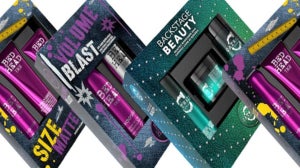
If you suffer from blemishes, rosacea, hyperpigmentation, or other skin issues, you’ve probably tried every treatment or product under the sun. But with all the beauty products out there that promise radiant skin, you might not have come across azelaic acid – the unsung skincare hero that dermatologists love.
Contrary to popular wisdom, strong treatments for problem skin can actually be counterproductive and can inflame sensitive skin even more. Azelaic acid products, on the other hand, are highly effective and treat your skin with the gentleness it needs to heal. Learn how azelaic acid can help clear blemish-prone skin, treat rosacea, and reduce spots and hyperpigmentation so that you can step into the glowing skin you deserve.
What is Azelaic Acid?Azelaic acid is a chemical compound called dicarboxylic acid, which is generated naturally by yeast present on your skin. The azelaic acid found in skincare products is typically synthesised in laboratories from grains like barley and wheat.
Azelaic acid has comedolytic (blackhead-preventing), exfoliating, keratolytic (keratin-reducing), anti-bacterial, and anti-inflammatory properties. With so many benefits, azelaic acid has to be one of the beauty industry’s best-kept secrets.
Azelaic acid products with concentrations of 15% and over need to be prescribed by dermatologists – but there are plenty of over-the-counter azelaic acid products with lower concentrations that you can use at home. You can find azelaic acids in creams, serums, cleansers, gels, foams, and more. Side effects are rare but can include irritation or itching. If you have any other symptoms, stop using the product and consult your doctor.
Azelaic Acid BenefitsAzelaic acid is a gentle and versatile ingredient that can help solve a whole bunch of skin problems.
Azelaic acid for blemishesSpots and blemishes can be caused many different things, including the build-up of bacteria and sebum in hair follicles. Keratin plugs caused by the accumulation of dead skin cells can create blemishes too. Azelaic acid works as a mild exfoliant to help get rid of dead skin cells and clear out your pores, as well as calming inflammation. The Filorga Age Purify Clean Smoothing Purifying Cleansing Gel gives your skin the gentle cleanse it needs for a healthy glow.
Azelaic acid for rosacea
Rosacea can lead to red patches on your skin and hypersensitivity. Azelaic acid has anti-inflammatory properties that help soothe irritated skin, while the keratolytic properties of azelaic acid reduce the occurrence of the protein-filled bumps that accompany rosacea. The IMAGE Skincare Iluma Intense Brightening Serum is an azelaic acid serum that soothes irritated skin and hydrates it for a brighter look. Read more about living with rosacea here.
Azelaic acid for hyperpigmentation
Tyrosinase is the enzyme that controls the production of melanin in our body. The overproduction of melanin in specific spots leads to darkened patches of skin or hyperpigmented spots. Azelaic acid has been known to inhibit the production of this tyrosinase and reduce the appearance of dark spots on your skin. The Lierac Sebologie Stop Spots Concentrate targets dark spots and marks for clearer, healthy-looking skin.
Azelaic acid for hair loss
Azelaic acid may also help prevent hair loss by strengthening hair follicles and reducing scalp oiliness. Check out these Philip Kingsley Treatments Density Preserving Scalp Drops that contain azelaic acid in the serum along with other ingredients, to keep your locks looking and feeling great.
Azelaic acid is suitable for vegan-friendly and gluten-free
Just another reason to love this wonder ingredient! Azelaic acid is derived from barley and other cereals, making it vegan-friendly. Although these grains may contain gluten themselves, there is a negligible amount of gluten in the azelaic acid itself which cannot be absorbed through the skin. But while azelaic acid itself is vegan and gluten-free, you should still check the ingredients in a product to confirm that the rest of it is.
How to add azelaic acid into your skincare routine
Most azelaic acid products are mild enough to be used twice a day. If you have ultra-sensitive skin, you may want to use your azelaic acid cream or serum once a day until you’re confident that it isn’t irritating your skin. Azelaic acid foams may work well for large areas like your back, while azelaic acid creams and gels suit smaller areas. Apply a small amount of azelaic acid cream or gel to cleansed skin and follow with moisturiser and sunscreen.
Azelaic acid products usually start showing results in about four to six weeks, but you’ll really see a difference if you stick to the treatments for at least three months.
Shop azelaic acid products on allbeauty today and your skin will thank you for it.
More content:
• Explore Beauty Ingredients • Shop Clean Beauty • More from the blog









